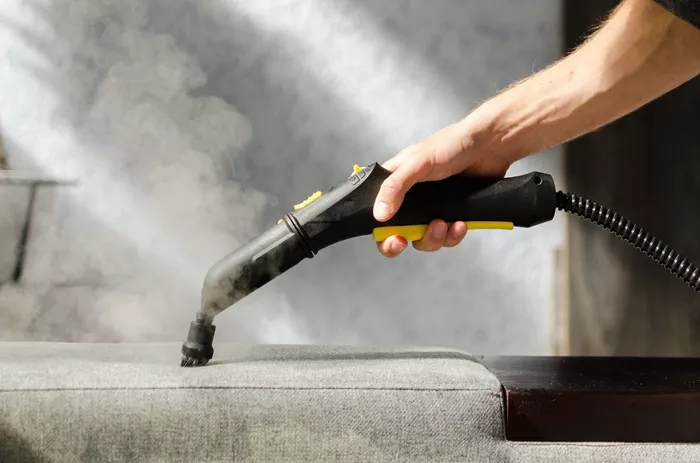Maintaining clean and hygienic floors is crucial for a healthy living environment. As homeowners seek effective cleaning methods, steam mops have gained popularity for their efficiency and convenience. However, a common question arises: Is a steam mop safe on vinyl floors? This article explores the safety and effectiveness of steam mops on vinyl flooring, guiding you through the pros and cons while providing essential tips for optimal use.
Understanding Vinyl Flooring
What is Vinyl Flooring?
Vinyl flooring is a synthetic flooring material made from polyvinyl chloride (PVC). It comes in various styles and designs, including sheets, tiles, and luxury vinyl planks. Vinyl is known for its durability, affordability, and ease of maintenance. This flooring is often used in homes, especially in kitchens, bathrooms, and laundry rooms due to its water resistance and ease of cleaning.
Characteristics of Vinyl Flooring
Vinyl floors are soft underfoot, making them comfortable for prolonged standing. They are also resistant to stains and scratches, which contributes to their popularity. However, they can be susceptible to heat and excessive moisture. This characteristic raises concerns about using steam mops for cleaning.
The Science Behind Steam Mopping
How Does a Steam Mop Work?
A steam mop uses water heated to high temperatures, producing steam that helps lift dirt and grime from surfaces. The steam penetrates the floor’s surface, sanitizing it without the need for harsh chemicals. This method is effective for various types of flooring, including tile and hardwood.
Benefits of Using a Steam Mop
Steam mops offer several advantages, such as:
Sanitization: The high temperature of the steam kills germs and bacteria, providing a deeper clean than traditional mops.
Chemical-Free Cleaning: Steam mops reduce the need for cleaning chemicals, making them an eco-friendly choice.
Quick Drying: The steam evaporates quickly, leaving floors dry and ready for use in a short time.
Are Steam Mops Safe for Vinyl Floors?
Potential Risks
While steam mops are generally effective for cleaning, there are specific risks associated with using them on vinyl flooring:
Heat Damage: Vinyl flooring can warp or become damaged when exposed to excessive heat. The high temperatures produced by steam mops may pose a risk, especially if used improperly.
Moisture Issues: Too much moisture can seep into seams and edges of vinyl planks, potentially leading to mold or mildew growth over time. Steam cleaning can introduce more moisture than traditional mopping.
Discoloration: Some vinyl floors may discolor if exposed to high heat or steam. It’s essential to consider the type of vinyl flooring you have before using a steam mop.
Manufacturer Recommendations
Before using a steam mop, always check the manufacturer’s guidelines for your specific vinyl flooring. Some brands explicitly state that steam mops are safe to use, while others advise against it. Following these guidelines is crucial to prevent voiding warranties or causing damage.
Best Practices for Using Steam Mops on Vinyl Floors
1. Check the Steam Mop Settings
Most steam mops come with adjustable heat settings. If your steam mop has a lower heat setting, use that option for cleaning vinyl floors. A lower temperature reduces the risk of damage while still providing effective cleaning.
2. Limit Steam Exposure
When using a steam mop, keep the mop moving to avoid concentrating heat on one spot. Prolonged exposure to steam in one area can lead to warping or damage.
3. Use a Microfiber Pad
Choose a steam mop that uses microfiber cleaning pads. Microfiber pads are soft and gentle on vinyl surfaces. They effectively trap dirt and grime without scratching the floor.
4. Clean Regularly
Instead of deep cleaning with a steam mop frequently, maintain regular cleaning with a damp mop. Using a steam mop occasionally can help keep the floors sanitized without the risk of excessive heat or moisture.
5. Perform a Patch Test
Before fully using a steam mop on your vinyl floor, conduct a patch test in a hidden area. Apply steam for a short duration and observe if any discoloration or damage occurs. If the floor shows no signs of damage after a few hours, it may be safe to proceed.
Alternatives to Steam Mops for Vinyl Floors
Traditional Mopping
Using a damp mop with a mild cleaning solution is the safest method for cleaning vinyl floors. Traditional mopping effectively removes dirt without introducing excessive heat or moisture.
Spot Cleaning
For spills and stains, spot cleaning with a soft cloth and appropriate cleaner is an effective approach. This method allows you to target specific areas without the need for a full cleaning cycle.
Use of Floor Cleaners
Consider using floor cleaners specifically designed for vinyl flooring. These cleaners are formulated to clean without causing damage or discoloration, providing a safe alternative to steam mopping.
see also: Will a Garment Steamer Kill Fleas?
When to Avoid Using a Steam Mop
1. New Vinyl Flooring
If your vinyl flooring is newly installed, it’s best to avoid steam mops for at least a few weeks. New floors need time to settle and cure. Using a steam mop too soon may risk damage.
2. Older or Worn Flooring
If your vinyl flooring shows signs of wear or damage, avoid using a steam mop. Scratches, cracks, or worn spots can be exacerbated by steam cleaning.
3. If Unsure
If you are unsure about the safety of using a steam mop on your specific vinyl floor, consult a professional. A flooring expert can provide tailored advice and alternative cleaning solutions.
Conclusion
In conclusion, while steam mops offer an effective cleaning method, caution is necessary when using them on vinyl floors. The potential for heat damage, moisture issues, and discoloration makes it crucial to follow best practices and consult manufacturer guidelines. Regular maintenance with traditional cleaning methods may often be the safest approach for preserving the beauty and integrity of vinyl flooring. Ultimately, understanding your flooring type and the cleaning equipment you use will help you maintain a clean and healthy home environment.
Related topics:

